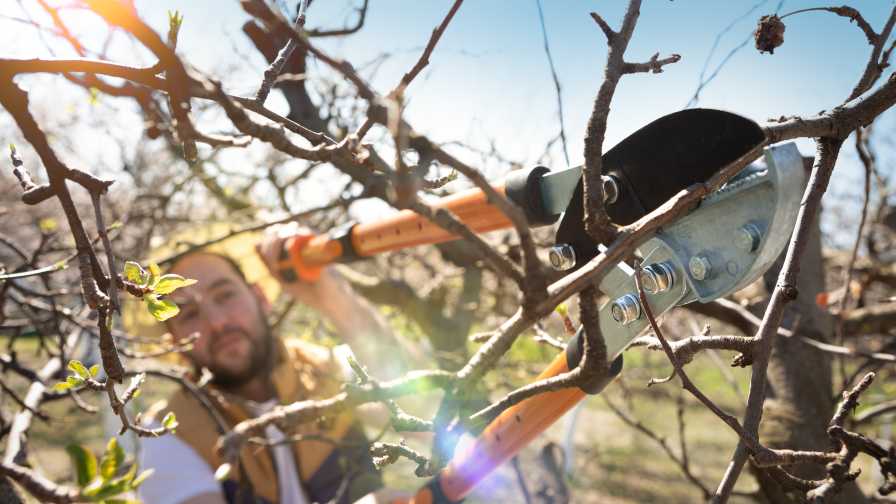Top 10 Pruning and Training Tips for Tree Fruit
Proper pruning and training techniques are key to a healthy orchard. For fruit growers, it pays to stay sharp in this area.
Here are some pointers mostly applicable to pome fruit, but there is some crossover to stone. And FYI: They are in no particular order.
1. Know your system. Whether central-leader “head and spread” or tall-spindle in apple, open-center or quad-V in peach, or steep-leader or Spanish-bush in cherry — you must know what the end goal is before you begin pruning.
2. Thinning cuts are your best friend. Yes they are, removing wood all the way back to where it originates is less invigorating (than heading cuts) and will result in a much happier, calmer tree.
3. Avoid heading cuts like the plague. No butch-style haircuts here please, unless of course the goal is to promote vigor and (excess) branching, such as heading a whip at planting.
4. Train twice, prune once. Like the old carpenter adage “measure twice, cut once” — early tree training in the orchard establishment years will go a long way to making your pruning job easier and more rule-based down the road. So focus less on pruning — only when necessary to create tree structure — and more on training, i.e., maintaining central leaders, removing competitive branches, tying down to horizontal, etc., during the early years.
5. Stubs are OK. Particularly when you want to promote new branching in tall-spindle apples, the trend being to leave longer stubs on less vigorous varieties like ‘Honeycrisp’.
6. Use “diameter-based” pruning. Meaning, particularly when establishing central-leader or tall-spindle apple trees, if a branch is more than 50% of the diameter from the leader where it originates, cut it out, using a stub cut of course! I like to apply diameter-based pruning to scaffold branches too, i.e., simplify.
7. Know when to prune. Dormant pruning is more invigorating, growing season pruning is less invigorating. Would be nice if we could do 2/3 of our pruning in the winter, and 1/3 in the summer I like to think. Rarely happens, though.
8. Limit tree height. Final tree height should be no more than the between-row width, preferably only 90%. Avoid heading the tree to the proper height, “crop and flop” then cutting to a weaker side shoot is far preferable.
9. Simplify. Similar to diameter-based pruning, use thinning cuts to remove “forks” in the tree to keep branches simple and promote growth of new fruiting wood.
10. Strive for a horizontal look. When I get done pruning a central-leader apple tree, I like the fruiting structure to appear horizontal, accomplished by removing upright and pendant (drooping) branching. Horizontal wood is far more fruitful and will have the best apples.
Oh, and one more thing. Buy yourself a battery-operated, hand-held electric pruner and ditch the loppers. It’s nearly life changing.











